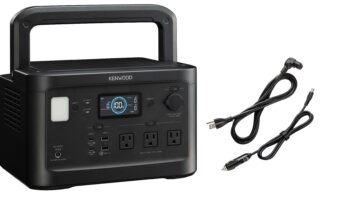Top executives from Dell, Panasonic, Philips and Sony voiced their opinions and agreed on many of the issues facing their companies and the industry during the Manufacturer Power Panel held recently at the CEA CEO Summit, held last month at the Four Seasons Resort, here.
Ron Garriques, president/CEO of Dell Global Consumer Group; Stan Glasgow, president/COO of Sony Electronics; Stewart Muller, president/CEO of Philips Consumer Electronics NA; and Joseph Taylor, executive VP/COO of Panasonic Corp. of America, were members of the panel, which was moderated by Gary Shapiro, president/CEO of the Consumer Electronics Association (CEA), which hosts the annual summit.
The subject of design trends in the industry was discussed and all agreed with the fact that consumers want a more personalized experience when it comes to using CE products and get away from commodity products.
Glasgow said that Sony “looks to consumer input” to “personalize a lot of products, not just in the United States but around the world. We try to create personal values” in products “with consumer input.”
Taylor volunteered, “We can create content to distribute to our friends, family and around the world … with HD camcorders, digital cameras and cellphones. User-generated content is having a profound effect on society. ‘You’ were named Time magazine’s Person of the Year. How all this will affect manufacturers is yet to be determined.”
Retailing is never far from these executives’ thoughts and Garriques discussed changes at retail and PC technology at the same time. He reminded everyone that Dell “has a 99 percent direct model” and that for a long while the PC business was just about ” ‘speeds and feeds’ with better processors, better software.” Five years from now he wants Dell to be “a broad retail player giving the traditional type of devices on value” and provide what he calls “needs and deeds” to leverage up the technology to provide a richer consumer experience.
On the subject of retail in five years, Garriques said that Dell’s recent deal with Wal-Mart may be the first in other types of retail distribution deals with “other retailers that provide more specified solutions that can add more content and value.” About the current struggle of today’s retailers, he was blunt. “The problem is there are just too many retailers now. I would see that settle down in five years.”
In discussing retail, Muller said manufacturers “Have the responsibility to give the tools to retailers to succeed.” That being said he noted that even with such support, retailers that have serious problems would still go out of business.
Muller noted that “retail partnerships” is an overused term but that suppliers “should not come up with new partners every six months” and that retailers shouldn’t drop brands over the short term “just based on price … we need true partnerships.”
Glasgow reiterated what he said at his recent Sony Roundtable (see TWICE, June 18, p. 1) about the current state of retailing when he noted, “Volume players deliver good value, but when a medium retailer goes national, they can have problems.” He added that those specialty retailers or regional players that provide strong customer service can thrive.
Muller noted, “P.C. Richard & Son [in the New York metro area] is a good example of that.”
When asked by Shapiro if today’s CE products are too complex, Taylor said, “Consumers have had no problems opening up a TV, radio or DVD and operating it. The story goes downhill from there. Consumers say they want all these features, but then the take them home and realize they don’t need them all or feel they are too complicated.”
Muller brought up the point that with Philips, and for that matter the other companies on the panel being global suppliers, “The level of expectation in North America for ease of use is much higher here than the rest of the world. In the U.S. we are technologically lazy. In Japan, in Europe consumers tear through instructions, but here, we want the product to jump out of the box and work. We can’t change the U.S. consumer and have to deal with that.”
And when Shapiro asked if the industry has done enough, or should do more, to educate consumers about the analog TV shutoff in February 2009, Glasgow jumped in saying, “We feel as an industry we need to educate consumers more, to work with CEA because consumers [in 2009] will be disappointed. Half of those who buy HDTVs today don’t get an HD [content] source. It’s better because it was 70 percent [in the past two years]. We are very concerned about this and we need to do more.”
Muller added, “The transition is tough. About 12 percent of consumers could be disenfranchised. Maybe with all this noise about the transition, the fact people realize now that digital TV is not HDTV, will help. More HDTV programming and the marketing of it will help awareness on the issue get better, but the 12 percent or so who rely on over-the-air signals are a challenge.”









